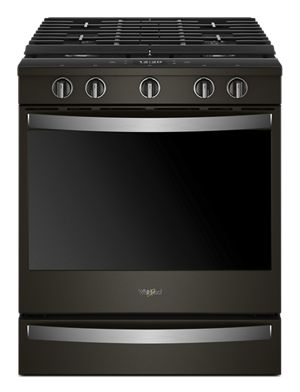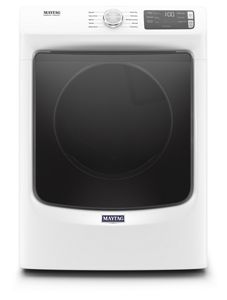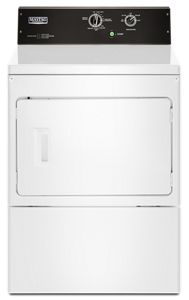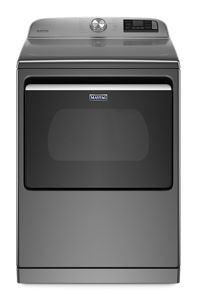
How To Clean A Dishwasher
In 5 Steps
Your dishwasher may be one of the hardest working appliances in your kitchen. After all, it takes care of cleaning dishes, glasses, silverware, pots, pans and other essentials after the meal is done. But food residue and mineral build-up can keep your dishwasher from performing at its best. Keep it clean to avoid clogs, leaks and damage. That’s why cleaning a dishwasher is an important part of appliance maintenance. Cleaning your dishwasher once every 30 days is recommended for optimal performance, and our guide to how to clean a dishwasher can show you how.
Cleaning a Dishwasher Instructions
Supplies
Microfiber cloth or sponge
Soft toothbrush
Warm, soapy water
Dishwasher cleaning tablets (if applicable)
Stainless steel appliance cleaner (if applicable)
1. Remove Food Residue From Dishwasher
To help keep your dishwasher smelling fresh for longer, remove food that drops into the dishwasher during loading and use a rag or paper towel to remove food caught in the drain after each cycle.
2. Wipe Off Grime
Grime like mineral deposits, limescale and sometimes grease can build up in the dishwasher over time, affecting your dishwasher's performance and leaving you with glassware that looks cloudy and dishes with caked-on crumbs. Using a damp microfiber cloth or sponge, wipe away residue from the inside of the door, including the door’s edges and control panel. Your dishwasher’s gasket — the rubber seal that lines the door — needs some attention, too. Gently clean the gasket with a soft toothbrush to remove grime from tough-to-reach crevices without putting too much pressure on the seal.


3. Remove and Clean Dishwasher Filter
Unless your dishwasher features a maintenance-free filter, you’ll need to manually clean the filter about once a month to help keep it functioning well. Clean the filter by following the steps below:
Locate the filter below the spray arm on the bottom of the dishwasher, then unlock and remove it.
Wash the filter with warm, soapy water and use a soft toothbrush to get rid of any stuck-on food particles on the mesh and plastic components.
- Rinse the filter and lock it back into place.
For more information about how to locate, remove and clean your dishwasher filter, follow this guide.
Select KitchenAid® dishwashers feature a maintenance-free filter system that doesn’t require any regular cleaning or maintenance. This system only requires you to occasionally empty a cup that prevents foreign objects from entering the dishwasher pump if it fills with particles or objects.
4. Use Cleaning Tablets For a Deep Clean
Cleaning your dishwasher with tablets can be a great way to help remove build-up inside the dishwasher cavity, especially in hard-to-reach areas. Tablets can be a convenient cleaning solution, since most can be used in the dishwasher with or without loaded dishes, and many are safe to use with both stainless steel and plastic-tub dishwashers.
Always check your dishwasher’s manual and cleaning tablet user instructions before cleaning your dishwasher with tablets.
5. Wipe Down Outside of Dishwasher
Keep your dishwasher looking clean and sleek with regular wipedowns of the exterior door panel, sides and handle. A soft, damp cloth and mild detergent should do the trick, but stainless steel exteriors may benefit from specially-formulated stainless steel cleaners. Remember to wipe back and forth in the direction of the grain when cleaning stainless steel appliances. Avoid using abrasive cleaning products on the exterior of the dishwasher, since they can damage the finish.
How to Clean a Dishwasher with Affresh®Dishwasher Cleaner
Affresh® cleaners are specially formulated to clean your appliance, and help clear away mineral built-up. Use affresh®dishwasher cleaner every month to remove white spots and film from detergents. Depending on the severity of the spots, more than one treatment may be required.
Follow the instructions on the affresh® dishwasher cleaner package:


Cleaning your dishwasher without dishes:
- Place 1 tablet in the detergent tray.
- If there is significant mineral build-up, place a second tablet in the bottom of the dishwasher.
- Run a normal wash cycle.
CLEANING YOUR DISHWASHER WITH DISHES:
- Place 1 tablet in the bottom of the dishwasher.
- Place detergent in the detergent tray.
- Run a normal wash cycle.


Find out where to buy affresh® cleaners online and in-store.
How Do I Clean My Dishwasher With Vinegar and Baking Soda?
Cleaning a dishwasher with vinegar or baking soda can be a convenient alternative. When looking for the best way to clean a dishwasher, keep in mind that not every dishwasher interior should be cleaned with vinegar, so be sure to review your dishwasher’s Use and Care guide before following the steps below to clean with either of the household ingredients.
To clean your dishwasher with a white vinegar rinse:
Fill a dishwasher-safe glass with 2 cups of white vinegar and place it on the bottom of the dishwasher. Do not use detergent – the vinegar will mix with the wash water.
Run the dishwasher through a complete washing cycle using an air-dry or an energy-saving dry option.
To clean your dishwasher with baking soda:
Sprinkle one cup of baking soda along the bottom of the dishwasher.
Run the dishwasher on a short, hot water cycle.
NOTE: Vinegar is an acid, and using it too often could damage your dishwasher. Do so only when you need to deeply cleanse your dishwasher, and be sure to check your owners manual first for cleaning recommendations.
How Do I Help Remove Odors and Mineral Deposits From My Dishwasher?
Cleaning your dishwasher with vinegar or a dishwasher cleaner should be part of your regular maintenance routine. However, some issues may require you to undertake a deeper cleaning routine. Extremely hard water mineral deposits can cause damage to your dishwasher and make it difficult to achieve a good cleaning, so a water softener is strongly recommended if your water hardness is 15 grains or more.
Unwanted dishwasher smells can range from the plastic smell of a new appliance to musty and spoiled smells that come from standing water or rancid food. If you only run your dishwasher every two or three days, try running a “rinse only” cycle each day until you have full load to help keep odors under control. Odors like petroleum, varnish or plastic often accompany a new dishwasher, and should dissipate within a few weeks. To accelerate the process, try running a white vinegar rise or using affresh® dishwasher cleaner to help reduce odors faster.
If your house is equipped with hard water or water with a high mineral content, you’re more likely to run into significant mineral build-up inside the dishwasher and on your dishes. Try using a liquid rinse aid and keep the rinse aid dispenser filled at all times to help keep mineral build-up at bay.
Shop Popular KitchenAid® Dishwashers
RELATED PRODUCTS
Explore KitchenAid® stainless steel dishwashers with a fingerprint resistant PrintShield™ Finish so you can put more into creating and less into cleaning.
Recommended Articles
-
 How to Clean a Self-Cleaning Oven in 4 Steps If you're trying to clean a self-cleaning oven, discover how a self-cleaning oven works and the best way to clean one to keep yours looking and working great.
How to Clean a Self-Cleaning Oven in 4 Steps If you're trying to clean a self-cleaning oven, discover how a self-cleaning oven works and the best way to clean one to keep yours looking and working great. -
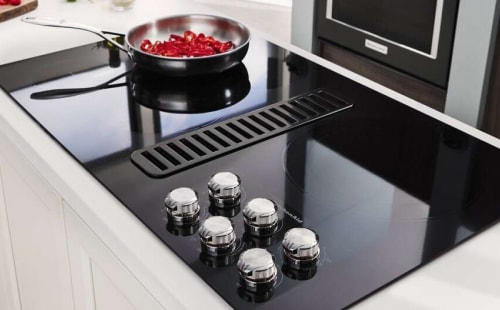 How to Clean a Glass Top Stove in 5 Steps Cleaning a glass top stove does not have to be a difficult task. Explore this step-by-step guide to learn how to clean a glass top stove and keep it looking great.
How to Clean a Glass Top Stove in 5 Steps Cleaning a glass top stove does not have to be a difficult task. Explore this step-by-step guide to learn how to clean a glass top stove and keep it looking great. -
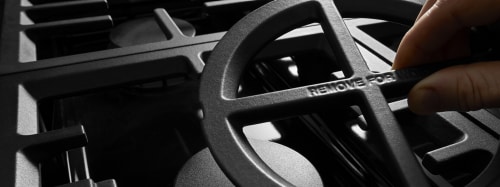 How to Clean Gas Stove Burners in 7 Steps Your gas stove works best when its burners are clean. Learn how to clean stove burners and burner caps with our step-by-step guide
How to Clean Gas Stove Burners in 7 Steps Your gas stove works best when its burners are clean. Learn how to clean stove burners and burner caps with our step-by-step guide
